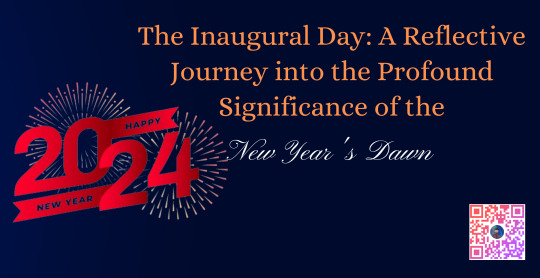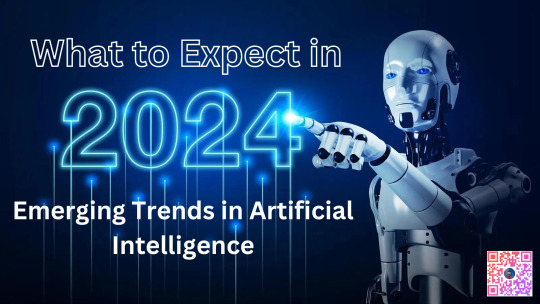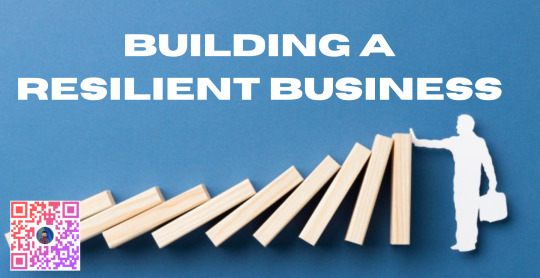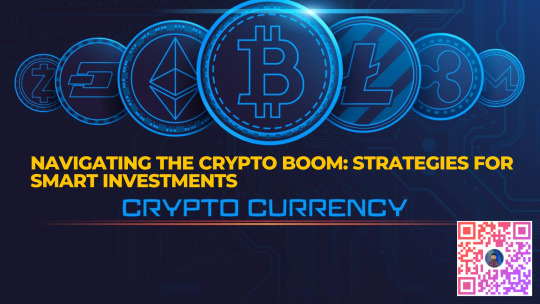Don't wanna be here? Send us removal request.
Text
Cricket is Not Just a Sport; It's an Emotion in India

Cricket in India is not merely a game; it's a fervor that courses through the veins of millions. It’s a shared passion that bridges generations, bringing together people from diverse backgrounds in a unified display of adoration for the sport and its players. Today, this profound connection was on full display as the Indian cricket team received a hero’s welcome in Mumbai and Delhi, following their recent triumph. This overwhelming reception speaks volumes about the ocean of love and respect that the nation holds for its cricket heroes.
An Ocean of Love

The streets of Mumbai and Delhi were a sea of blue as enthusiastic fans, waving the tricolor, chanted slogans and expressed their unending admiration for the team. The atmosphere was electric, pulsating with excitement and pride. This wasn’t just a celebration of victory; it was a testament to the deep-rooted love that the country has for its cricketing legends. From young children to the elderly, the entire nation came together to shower the players with accolades, proving once again that cricket is an integral part of India's cultural fabric.
Reflecting on 2011

As we reflect back to the glorious year of 2011, it’s impossible not to feel a sense of nostalgia. That year, India lifted the World Cup, and it was a moment that united the country in joy. Rohit Sharma, a key figure in Indian cricket today, was not part of that victorious squad. Fast forward to the present, and Rohit returns to the iconic Wankhede Stadium, not just as a player but as the captain of a triumphant Indian team. His journey is nothing short of inspirational, symbolizing determination, resilience, and excellence. From being a talented youngster to leading the national team, Rohit’s story is a testament to hard work and perseverance.

The Journey of Champions
The journey of the Indian cricket team is a saga of relentless effort, unwavering commitment, and exceptional talent. The sight of Rohit Sharma, Virat Kohli, Hardik Pandya, Suryakumar Yadav, Jasprit Bumrah, Rahul Dravid, and the entire team being celebrated by their fans was heartwarming. Each of these players has a unique story of struggle and success, contributing to the team's collective glory. Virat Kohli’s aggressive and passionate approach, Hardik Pandya’s all-round brilliance, Suryakumar Yadav’s innovative batting, Jasprit Bumrah’s lethal bowling, and Rahul Dravid’s sage-like guidance have all played a pivotal role in shaping the team’s journey.
The Acknowledgment of Legends
The acknowledgment from the fans is more than just applause; it’s a validation of the blood, sweat, and tears shed by these athletes. Seeing the players being showered with love and respect is a reminder of the deep connection that cricket has with the soul of India. It’s a sport that brings joy, sorrow, excitement, and a sense of belonging to millions. The hero’s welcome is a manifestation of the nation’s gratitude for the entertainment, pride, and countless memories that these players have provided over the years.

Cricket as a Unifying Force
Cricket in India transcends boundaries, languages, and cultures. It unites people in a way that few other things can. Whether it’s a thrilling last-ball finish, a spectacular century, or a mesmerizing bowling spell, cricket has the power to evoke emotions that are unparalleled. It’s a common language that every Indian speaks, a bond that brings together strangers, and a source of endless debates, discussions, and dreams. The sport has a unique ability to break down social and economic barriers, making it a truly democratic pastime.
The Influence of Cricket Icons
The influence of cricket icons like Sachin Tendulkar, MS Dhoni, and now, players like Rohit Sharma and Virat Kohli, goes beyond the cricket field. These players are role models, inspiring millions to dream big and strive for excellence. Sachin’s dedication, Dhoni’s calm under pressure, Rohit’s leadership, and Virat’s passion have left an indelible mark on the psyche of the nation. Their stories of hard work, sacrifice, and success resonate with fans, making them more than just cricketers – they are national heroes.
The Role of Technology and Media
In the modern era, technology and media have played a crucial role in enhancing the cricket-watching experience. Live broadcasts, social media updates, and fan interactions have brought the game closer to the audience. Fans can follow their favorite players, get real-time updates, and even engage in discussions with fellow enthusiasts online. This constant connectivity has further fueled the passion and excitement surrounding cricket, making it an ever-present part of daily life in India.
Grassroots Development and Future Prospects
The love for cricket in India is also reflected in the robust infrastructure and grassroots development programs aimed at nurturing young talent. From local tournaments to state-level competitions, there are numerous platforms for budding cricketers to showcase their skills. The Indian Premier League (IPL) has also been instrumental in identifying and grooming future stars, providing them with invaluable experience and exposure. The future of Indian cricket looks bright, with a steady stream of talented youngsters ready to take the baton from the current stalwarts.
Conclusion
As the Indian cricket team basks in the glory of their recent victory, the hero’s welcome they received is a poignant reminder of the deep emotional bond that cricket has with the nation. It’s more than just a sport; it’s an integral part of India’s identity, a source of immense pride, and a symbol of unity and passion. The journey of the players, from their humble beginnings to becoming national icons, mirrors the aspirations and dreams of millions of Indians.
Cricket in India is indeed an emotion, an ocean of love, and a journey of endless admiration. Today, as we celebrate our heroes, we also celebrate the spirit of cricket that continues to inspire and unite us all. It’s a testament to the power of sport to bring joy, foster unity, and create lasting memories that will be cherished for generations to come.
#Cricket#IndianCricketTeam#Passion#Unity#Pride#kohli#t20worldcup2024#jiocinema#hotstar#dream11#mumbai#marinedrive#champions#icc#bcci#Rohit#Virat#Hardik#Surya#Bumrah#Dravid#virat kohli#viralpost#viratfans#icct20worldcup2024
0 notes
Text
🌍 Addressing Mental Health in the Global Workforce 🌍
In today's interconnected world, mental health challenges are a universal issue affecting employees across all industries and regions. The recent article on "Mental Health Challenges in the Global Workforce" sheds light on the prevalence of these issues, their impact on productivity, and the importance of creating supportive work environments.
Discover how organizations worldwide are prioritizing mental well-being and learn actionable strategies to support your team. Together, we can foster a healthier, more resilient global workforce.
🔗 [Read the full article here]
#MentalHealth#GlobalWorkforce#EmployeeWellbeing#WorkplaceMentalHealth#HR#Leadership#remotework#artificial intelligence#marketing#founder#adaptability#digitaltransformation#innovation#machine learning#branding#futuretech
0 notes
Text
International Yoga Day: Embracing Wellness, Unity, and Global Harmony

Every year on June 21st, the world comes together to celebrate International Yoga Day—a day dedicated to honoring the ancient practice that promotes physical, mental, and spiritual well-being. Recognized by the United Nations since 2015, this global observance highlights the profound impact of yoga on individuals and communities worldwide.
The Essence of Yoga: Mind-Body Harmony
Yoga, originating from ancient India, is far more than a series of physical exercises. It embodies a holistic approach to health, combining physical postures (asanas), controlled breathing (pranayama), meditation, and relaxation techniques. This integrated approach not only enhances flexibility, strength, and balance but also nurtures mental clarity, emotional resilience, and a profound sense of inner peace.
A Global Celebration of Unity
International Yoga Day transcends borders and cultures, uniting millions in the shared practice of yoga. From bustling city centers to tranquil retreats, people of all ages and backgrounds gather to participate in yoga sessions, workshops, and community events. It serves as a powerful reminder of our interconnectedness and shared commitment to well-being.
Scientifically Proven Benefits
The health benefits of yoga are well-documented and supported by scientific research. Regular practice has been shown to reduce stress levels, improve cardiovascular health, boost immune function, and aid in the management of chronic conditions such as hypertension and diabetes. Furthermore, yoga's emphasis on mindfulness and relaxation contributes significantly to mental health, offering effective tools for managing anxiety, depression, and enhancing overall psychological well-being.
Yoga: A Pathway to Inner Peace and Global Understanding
Beyond its physical and mental benefits, yoga promotes unity and peace on a global scale. By fostering a sense of compassion, tolerance, and respect for diversity, yoga encourages individuals to transcend cultural differences and embrace a shared commitment to personal and collective well-being. It serves as a powerful catalyst for building bridges and promoting dialogue in our increasingly interconnected world.
Yoga in Modern Society: Nurturing Wellness Amidst Challenges
In today's fast-paced and often stressful world, yoga provides a sanctuary—a space for individuals to reconnect with themselves and restore balance amidst the demands of daily life. As more people integrate yoga into their routines, its influence extends beyond individual health to foster healthier communities and a more harmonious society.
Looking Ahead: Embracing the Legacy of Yoga
As we commemorate International Yoga Day each year, we reaffirm our dedication to the timeless principles of yoga—health, harmony, and unity. It is an opportunity to celebrate our diverse cultural heritage while embracing a shared vision of a healthier, more compassionate world. By continuing to promote the practice of yoga globally, we can create lasting positive change for generations to come.
In conclusion, International Yoga Day celebrates the universal appeal of yoga as a pathway to holistic well-being, unity, and global harmony. It invites us all to explore and embrace the transformative power of yoga, both individually and collectively, as we strive towards a brighter and more peaceful future.
#InternationalYogaDay hashtag#mayorainfotech hashtag#YogaForHealth hashtag#MindBodyBalance hashtag#GlobalUnity hashtag#yoga hashtag#fitness hashtag#meditation hashtag#yogapractice hashtag#yogainspiration hashtag#love hashtag#yogalife hashtag#yogaeverydamnday hashtag#yogi hashtag#mindfulness hashtag#yogateacher hashtag#yogalove hashtag#workout hashtag#gym hashtag#yogaeveryday hashtag#motivation hashtag#pilates hashtag#namaste hashtag#health hashtag#wellness hashtag#yogagirl hashtag#yogaeverywhere hashtag#nature hashtag#yogachallenge hashtag#healthylifestyle hashtag
0 notes
Text
Building Stronger Client Relationships: The Cornerstone of Long-term Sales Success in the IT Industry

In the ever-evolving landscape of the IT industry, where competition is fierce and technology trends shift rapidly, one factor remains constant: the importance of building strong client relationships. In this article, we delve into the significance of nurturing client connections and explore actionable strategies for fostering long-term sales success in the IT sector.
The Importance of Client Relationships in IT Sales: Establishing and maintaining strong client relationships is paramount for sustained success in IT sales for several reasons:
Trust and Credibility: Strong relationships build trust and credibility, essential elements for clients to feel confident in your IT solutions and services.
Repeat Business: Loyal clients are more likely to engage in repeat business, leading to consistent revenue streams and long-term profitability.
Referrals and Recommendations: Satisfied clients are valuable advocates who can provide referrals and recommendations, expanding your client base organically.
Collaboration and Innovation: Close relationships foster open communication, enabling collaboration and co-innovation on projects, driving mutual growth and success.
Strategies for Building Stronger Client Relationships:
Now, let's explore some actionable strategies for cultivating and strengthening client relationships in the IT industry:
Understanding Client Needs: Conduct in-depth discussions to understand the unique challenges and objectives of each client.Tailor IT solutions and services to meet specific client requirements, demonstrating attentiveness and dedication.
Proactive Communication: Maintain regular communication channels to keep clients informed about project progress, updates, and industry insights.Anticipate potential issues and address concerns promptly, showcasing responsiveness and reliability.
Providing Value-added Services:Offer additional value through ongoing support, training, and consultation services, demonstrating a commitment to client success beyond the initial sale.Share relevant resources, such as whitepapers, case studies, and webinars, to empower clients with valuable knowledge and insights.
Building Personal Connections:Foster genuine relationships by understanding the individuals behind the client organization.Invest time in networking events, client meetings, and personalized interactions to strengthen rapport and trust.
Delivering Exceptional Customer Experience:Focus on delivering exceptional customer experiences at every touchpoint, from initial contact to post-sales support.Strive for excellence in service delivery, responsiveness, and problem-solving to exceed client expectations.
Seeking Feedback and Acting Upon It:Actively seek feedback from clients to understand their satisfaction levels and areas for improvement.Use client feedback to iterate and enhance products, services, and processes, demonstrating a commitment to continuous improvement.
Conclusion
In the competitive landscape of the IT industry, building stronger client relationships is not just a best practice but a strategic imperative for long-term sales success. By prioritizing trust, communication, value delivery, and exceptional customer experiences, IT companies can forge lasting partnerships that drive mutual growth and prosperity. Embrace the journey of cultivating meaningful connections with clients, and reap the rewards of sustained sales success in the dynamic world of technology.
#ClientRelationships#ITSales#LongTermSuccess#TrustAndCredibility#RepeatBusiness#Referrals#Collaboration#Innovation#Communication#ValueAddedServices#CustomerExperience#Feedback#ContinuousImprovement#TechIndustry#SalesStrategies#ClientSuccess#ITServices#Networking#CustomerSatisfaction#BusinessDevelopment
0 notes
Text
The Inaugural Day: A Reflective Journey into the Profound Significance of the New Year's Dawn

Introduction:
As the clock strikes midnight on the eve of a new year, a palpable sense of anticipation and renewal envelops us. The first day of the year, akin to the opening chapter of a novel, sets the stage for the narrative that will unfold over the next 365 days. In this exploration, we delve deep into the multifaceted significance of the first day of the year, understanding its power to shape our narratives, set the tone for the months that follow, and propel us towards personal and collective transformation.
A Blank Slate for Personal Renewal:
The first day of the year arrives as a pristine canvas, untarnished by the victories or defeats of yesteryear. It offers a unique vantage point—a temporal juncture where we can release the burdens of the past and step into the future unencumbered. This blank slate is not just a symbolic gesture but an optimistic invitation to embrace the coming days with renewed vigor and a commitment to evolving through the lessons learned from the preceding year.
Setting Intentions: A Deliberate Act of Creation:
At the heart of the first day lies the profound act of setting intentions—a deliberate, introspective journey into the soul's aspirations. It transcends the traditional notion of goal-setting, delving into the core of what we value, what brings us joy, and what we envision for our personal and professional selves. The first day offers a rare moment of stillness amidst life's hustle—a moment to articulate our priorities and consciously align our actions with the profound tapestry of our aspirations.
Cultivating an Attitude of Gratitude:
As the first rays of the new year's sun grace the horizon, it beckons us to reflect on the myriad blessings that have graced our lives. Cultivating gratitude on this auspicious day is not merely a ritualistic practice but an intentional act that establishes a positive foundation for the entire year. Taking a moment to appreciate the people who have enriched our lives, the experiences that have shaped us, and the opportunities that have paved our journey fosters a mindset of abundance and contentment—an attitude that resonates through the highs and lows of the coming year.
Mindful Beginnings: Navigating the Present Moment:
The first day of the year serves as an invitation to approach the unfolding moments with a heightened sense of mindfulness. Whether through a tranquil morning reflection, a contemplative walk in nature, or a simple moment of stillness, embracing mindfulness on this day creates a harmonious resonance that permeates the daily fabric of our lives. This intentional state of presence allows us to appreciate the nuances of our existence and lay the groundwork for mindful living throughout the year.
Casting Vision for a Purposeful Future:
Vision casting on the first day transcends traditional goal-setting—it is a profound act of envisioning the future we desire. What experiences do we seek to create? What personal and professional milestones do we aspire to achieve? The first day offers an ideal platform for visualizing and articulating these aspirations, transforming abstract dreams into tangible, actionable objectives that guide our journey through the labyrinth of the year.
Conclusion:
In conclusion, the first day of the year is not merely a chronological transition but a gift—an opportunity to consciously embrace the transformative potential within ourselves and the world. It beckons us to stand at the crossroads of the past and the future, equipped with the wisdom of our experiences and the optimism of what lies ahead. As we step onto this metaphorical blank canvas, let us greet each day with gratitude, intention, and a steadfast commitment to making the most of the precious time we have. The first day is not just a date on the calendar; it is a canvas waiting for the masterpiece of our lives to unfold—a masterpiece that we, as artists of our destiny, have the power to shape and create. Let us embark on this journey with reverence, resilience, and an unwavering belief in the boundless potential that resides within us and the promise of the days yet to come.
#newyear2024#freshstart#2024trends#freshbeginnings#newyear#journey#aspirations#mindfulliving#gratitude#VisionCasting#masterpiece#intentions#optimism#embracethejourney#dreambigworkhard#opportunities#positivevibesonly#possibilities#renewabletech#newbeginnings
0 notes
Text
Emerging Trends in Artificial Intelligence: What to Expect in 2024

Introduction
As we step into 2024, the realm of Artificial Intelligence (AI) continues to evolve at an unprecedented pace, reshaping industries and influencing our daily lives. From breakthroughs in machine learning to advancements in natural language processing, the AI landscape is teeming with innovation. In this article, we explore the emerging trends that are set to define the AI landscape in 2024 and beyond.
Explainable AI (XAI): The demand for transparency in AI decision-making is on the rise. Explainable AI, which allows users to understand how AI models arrive at specific outcomes, is gaining prominence. As ethical considerations surrounding AI become more critical, XAI is expected to become a standard in AI development.
AI-powered Cybersecurity: With the increasing sophistication of cyber threats, AI is becoming a crucial ally in fortifying digital defenses. AI-driven cybersecurity systems can analyze vast amounts of data in real-time, identify anomalies, and respond to potential threats more effectively than traditional methods.
AI in Healthcare Diagnostics: The healthcare industry is witnessing a surge in AI applications for diagnostics. From image recognition in radiology to predictive analytics for patient outcomes, AI is streamlining medical processes, enhancing accuracy, and contributing to personalized treatment plans.
AI for Climate Change Solutions: AI is playing a pivotal role in addressing climate change challenges. From optimizing energy consumption to predicting environmental patterns, AI is helping researchers and policymakers make data-driven decisions to mitigate the impact of climate change.
Edge AI: Edge computing combined with AI, known as Edge AI, is gaining traction. This approach processes data locally on devices rather than relying on centralized servers. This not only reduces latency but also enhances privacy and security in applications ranging from IoT devices to autonomous vehicles.
AI-driven Creativity: AI is transcending its analytical role and entering the realm of creativity. From generating art and music to assisting in content creation, AI algorithms are becoming creative collaborators, augmenting human capabilities and expanding the boundaries of what is possible.
AI Ethics and Governance: As AI becomes more integrated into society, ethical considerations and governance frameworks are becoming paramount. Expect increased emphasis on responsible AI development, addressing bias in algorithms, and establishing guidelines for the ethical deployment of AI systems.
Quantum Computing and AI Integration: The intersection of quantum computing and AI is an area garnering significant attention. Quantum computing has the potential to exponentially enhance the capabilities of AI algorithms, solving complex problems that were previously infeasible for classical computers.
Conclusion
As we look ahead to 2024, the world of Artificial Intelligence promises to be dynamic and transformative. From enhancing transparency with Explainable AI to addressing global challenges like climate change, the evolving trends in AI are reshaping our future. Embracing these trends responsibly and ethically will be crucial as we navigate the exciting and sometimes challenging landscape of AI innovation in the coming years.
#AI2024#techtrends#innovation#aiinnovation#techtrends2024#futuretech#emergingtech#AIProgress#InnovateWithAI#airevolution#TomorrowTech#2024:#unveiling#Tomorrow's#trends
0 notes
Text
Sustainable Investing: Aligning Profit with Purpose

In the dynamic landscape of finance, a paradigm shift is occurring as investors increasingly recognize the importance of sustainable investing. More than just a financial strategy, sustainable investing aligns profit with purpose, integrating environmental, social, and governance (ESG) criteria into investment decisions. This article delves into the principles of sustainable investing, explores its growing significance, and highlights the transformative impact it can have on both the financial world and society at large.
The Principles of Sustainable Investing:
Environmental Considerations: Sustainable investing evaluates a company's impact on the environment, considering factors such as carbon footprint, resource usage, and adherence to environmental regulations. Investors seek businesses committed to reducing their ecological footprint and fostering sustainable practices.
Social Responsibility: Companies are assessed on their social impact, including labor practices, diversity and inclusion, community engagement, and human rights. Sustainable investing prioritizes businesses that contribute positively to societal well-being and operate ethically.
Governance Standards: Governance plays a crucial role in sustainable investing, focusing on a company's leadership, transparency, and adherence to ethical business practices. Investors favor companies with strong governance structures that prioritize accountability and shareholder rights.
Aligning Profit with Purpose:
Long-Term Value Creation: Sustainable investing emphasizes long-term value creation over short-term gains. By focusing on companies with sustainable business practices, investors contribute to the creation of resilient and enduring value.
Risk Mitigation: Companies with robust ESG practices are often better equipped to navigate risks. Sustainable investing inherently involves thorough risk assessment, contributing to more informed investment decisions and reduced exposure to unforeseen challenges.
Positive Social Impact: Beyond financial returns, sustainable investing seeks to generate positive social impact. Investing in businesses committed to social responsibility contributes to community development, poverty alleviation, and overall societal well-being.
Growing Significance:
The global shift toward sustainability is evident in the increasing demand for ethical and socially responsible investment options. Investors, particularly millennials and the younger generation, are aligning their values with their investment choices. Financial institutions and corporations are responding by integrating sustainable practices and transparency into their operations, realizing that sustainable investing is not only ethically sound but also economically viable.
Transformative Impact:
Sustainable investing has the power to drive positive change on a global scale. By directing capital towards businesses that prioritize sustainability, investors become catalysts for environmental conservation, social progress, and ethical governance. This transformative impact extends beyond financial markets, influencing corporate behavior and fostering a more responsible and sustainable global economy.
Conclusion:
Sustainable investing represents a fundamental shift in the way we approach financial decisions, demonstrating that profit and purpose can coexist harmoniously. As the world grapples with pressing environmental and social challenges, sustainable investing emerges as a beacon of hope, offering a pathway for investors to contribute meaningfully to a more sustainable and equitable future. As this movement gains momentum, the integration of ESG principles into investment strategies becomes not just a choice but a responsibility for those seeking a better and more sustainable world.
0 notes
Text
Building a Resilient Business: Lessons from Unpredictable Times

The business landscape is ever-changing, and recent unpredictable events have highlighted the importance of resilience. In the face of uncertainties, building a resilient business becomes not just a strategy but a necessity. This article explores key lessons learned from unpredictable times and outlines actionable steps to foster resilience within your organization.
Lesson 1:
Embrace Agility and Adaptability Unpredictable times underscore the need for businesses to be agile and adaptable. Organizations that can swiftly pivot their strategies and operations in response to changing circumstances are better positioned to weather uncertainties. Foster a culture that encourages innovation, welcomes change, and empowers employees to adapt quickly to new challenges.
Lesson 2:
Prioritize Digital Transformation The digital landscape has proven to be a lifeline for businesses during unpredictable times. Investing in digital transformation enables remote work, enhances customer experiences, and provides real-time data for informed decision-making. Embrace technologies that align with your business goals and streamline processes for improved efficiency and resilience.
Lesson 3:
Diversify Revenue Streams Overreliance on a single revenue stream can leave a business vulnerable during turbulent times. Diversify your income sources to create a more robust financial foundation. Explore new markets, products, or services that align with your core competencies, reducing the impact of economic fluctuations on your bottom line.
Lesson 4:
Build Strong Relationships In times of crisis, strong relationships with customers, suppliers, and partners can be invaluable. Communication is key – keep stakeholders informed and engaged. Build a network of trust that can provide support during challenges. Collaborative partnerships can lead to shared resources and ideas that contribute to overall resilience.
Lesson 5:
Invest in Employee Well-being Resilient businesses prioritize the well-being of their employees. A supportive work culture, mental health resources, and flexible work arrangements contribute to a motivated and resilient workforce. Engage with employees, listen to their concerns, and provide the necessary resources to help them navigate challenging times.
Lesson 6:
Develop Robust Risk Management Strategies Anticipating and mitigating risks is fundamental to building resilience. Regularly assess potential threats to your business, whether they be economic downturns, supply chain disruptions, or cybersecurity risks. Develop comprehensive risk management strategies that enable your organization to respond effectively when challenges arise.
Lesson 7:
Learn from the Past, Plan for the Future History serves as a valuable teacher. Analyze past challenges and crises to identify lessons learned. Use this knowledge to inform your business continuity and crisis management plans. Proactively plan for potential disruptions, ensuring that your organization is well-prepared to navigate the uncertainties of the future.
Conclusion:
Building a resilient business is an ongoing process that requires foresight, adaptability, and a commitment to continuous improvement. By embracing these lessons from unpredictable times, businesses can fortify their foundations, navigate uncertainties, and emerge stronger in the face of adversity. Resilience is not just a buzzword – it's a strategic imperative for sustainable success in today's dynamic business environment.
0 notes
Text
The Rise of Quantum Computing: Unleashing Unprecedented Power

In the realm of technology, a revolutionary force is on the horizon – Quantum Computing. As we stand at the brink of a new era, the promise of unprecedented computing power is reshaping our understanding of what's possible. Quantum computing holds the potential to solve complex problems at speeds unimaginable with classical computers. In this article, we will explore the rise of quantum computing, the principles that govern it, and the transformative impact it is poised to have on various industries.
Understanding Quantum Computing:
Quantum computing leverages the principles of quantum mechanics to process information in a way that defies the limitations of classical computing. While classical bits exist in one of two states, 0 or 1, quantum bits or qubits can exist in multiple states simultaneously, thanks to a phenomenon called superposition. This unique property enables quantum computers to perform complex calculations at an exponentially faster rate than their classical counterparts.
Unleashing Unprecedented Power:
The real power of quantum computing lies in its ability to tackle complex problems that are currently beyond the reach of classical computers. Tasks like simulating molecular structures for drug discovery, optimizing supply chains, and breaking encryption codes become exponentially faster with quantum computers. As quantum processors continue to advance, their potential applications span across industries, from finance and healthcare to artificial intelligence and cybersecurity.
Potential Impact on Industries:
Healthcare and Drug Discovery: Quantum computing can accelerate the simulation of molecular structures, expediting drug discovery and opening new frontiers in personalized medicine.
Finance: Quantum algorithms have the potential to revolutionize financial modeling and optimization, leading to more accurate predictions and better risk management.
Artificial Intelligence: Quantum computing can enhance machine learning algorithms, enabling the development of more powerful AI models for advanced data analysis and pattern recognition.
Supply Chain Optimization: Quantum computing's ability to process vast amounts of data quickly can revolutionize supply chain optimization, improving efficiency and reducing costs.
Cybersecurity: While quantum computing poses a potential threat to classical encryption methods, it also offers new cryptographic techniques that can enhance cybersecurity.
Challenges and Future Prospects:
Despite its incredible potential, quantum computing faces significant challenges, including error correction, scalability, and maintaining qubit stability. Researchers and companies worldwide are actively working to overcome these hurdles. As quantum computers move from research labs to practical applications, their impact will reshape industries, create new possibilities, and address some of the most pressing challenges facing society.
Conclusion:
The rise of quantum computing marks a pivotal moment in the evolution of technology. As we unlock the potential of quantum processors, we open doors to unprecedented computing power and transformative possibilities. While challenges remain, the collaborative efforts of scientists, researchers, and industry leaders are propelling us toward a future where the computational limits of today become the stepping stones to the advancements of tomorrow. The age of quantum computing has dawned, and the journey promises to be as thrilling as the destination is groundbreaking.
#QuantumLeap#FutureTech#InnovationHub#TechRevolution#QuantumComputing#DigitalTransformation#AIAdvancements#NextGenTech#IndustryDisruption#TechInnovation
0 notes
Text
Mastering the Art of Remote Collaboration: Tools and Strategies for Success

In recent years, remote work has become an integral part of the modern professional landscape, and the ability to collaborate effectively in a virtual environment is a crucial skill. As the world continues to embrace flexible work arrangements, mastering the art of remote collaboration is essential for individuals and teams alike. In this article, we will explore some powerful tools and strategies that can enhance your remote collaboration experience.
Tools for Seamless Collaboration:
Communication Platforms:
Utilize platforms like Slack, Microsoft Teams, or Zoom for real-time communication.
Establish clear communication channels for different purposes, such as project updates, casual conversations, and team meetings.
Collaborative Document Editing:
Platforms like Google Workspace and Microsoft 365 enable multiple users to collaborate on documents simultaneously.
Foster real-time collaboration on projects, eliminating version control issues.
Project Management Tools:
Platforms like Trello, Asana, or Jira help teams organize tasks, set deadlines, and track project progress.
Use agile methodologies to adapt to changing project requirements efficiently.
Cloud Storage Solutions:
Dropbox, Google Drive, or OneDrive provide secure and accessible storage for shared documents.
Ensure files are organized logically and accessible to the relevant team members.
Virtual Whiteboards:
Tools like Miro or Microsoft Whiteboard facilitate brainstorming and collaborative planning.
Mimic the experience of in-person whiteboard sessions for creative collaboration.
Strategies for Effective Remote Collaboration:
Establish Clear Communication Norms:
Define expectations for response times, meeting schedules, and communication methods.
Encourage open communication and the use of video calls to build stronger connections.
Regular Check-Ins:
Schedule regular team check-ins to discuss progress, address concerns, and foster a sense of unity.
Use one-on-one meetings for personalized discussions and feedback.
Set Clear Goals and Deadlines:
Clearly define project goals, milestones, and individual responsibilities.
Break down larger tasks into smaller, manageable goals to maintain motivation and focus.
Promote a Positive Team Culture:
Foster a sense of camaraderie through virtual team-building activities.
Recognize and celebrate achievements, creating a positive and motivating work environment.
Emphasize Results Over Activity:
Focus on outcomes and deliverables rather than micromanaging work hours.
Trust your team members to manage their time effectively and deliver quality results.
Invest in Professional Development:
Provide opportunities for skill development and training to keep team members engaged and up-to-date.
Encourage a culture of continuous learning to adapt to the evolving remote work landscape.
Conclusion:
Mastering the art of remote collaboration involves a combination of powerful tools and effective strategies. By leveraging the right technologies and fostering a positive team culture, individuals and teams can thrive in a virtual work environment. As we continue to navigate the ever-changing landscape of remote work, the ability to collaborate seamlessly will undoubtedly be a key determinant of professional success.
#RemoteWork#CollaborationTools#Teamwork#Productivity#VirtualTeam#FutureOfWork#ProfessionalDevelopment#DigitalWorkspace#WorkFromAnywhere#TechTools#SuccessInRemoteWork#Leadership#DigitalTransformation#WorkSmart#RemoteCulture#CareerDevelopment
0 notes
Text
Content Marketing in 2023: Trends and Best Practices

In the ever-evolving landscape of digital marketing, content remains king. As we step into 2023, the dynamic nature of online consumer behavior continues to shape the way businesses approach content marketing. To stay ahead of the curve, it's crucial for marketers to not only recognize emerging trends but also to adopt best practices that resonate with today's audience. Let's delve into the key trends and best practices shaping content marketing in 2023.
1. Video Dominance Continues:
Video content has been reigning supreme, and its dominance is set to continue in 2023. Short-form videos, reels, and interactive content are captivating audiences across platforms. To leverage this trend, businesses should invest in creating engaging and shareable video content that tells their brand story in a visually compelling way.
2. Personalization at Scale:
Personalization is no longer just a recommendation; it's an expectation. In 2023, consumers anticipate personalized experiences, from tailored content recommendations to individualized email campaigns. Utilize data-driven insights to understand your audience's preferences and deliver content that speaks directly to their needs and interests.
3. Rise of User-Generated Content:
User-generated content (UGC) is a powerful tool for building authenticity and community. Encourage your audience to create and share content related to your brand. UGC not only boosts brand credibility but also provides a steady stream of diverse content that resonates with a broader audience.
4. Sustainability and Purpose-Driven Content:
Consumers are increasingly conscious of the environmental and social impact of their choices. Brands that align with sustainability and purpose-driven values are gaining traction. Create content that showcases your commitment to making a positive impact, whether it's through eco-friendly practices or supporting social causes.
5. Audio Content and Podcasting:
The popularity of podcasts and audio content is on the rise. Audiences are drawn to the convenience of consuming content on the go. Consider incorporating podcasting into your content strategy to reach audiences during their commutes, workouts, or other audio-friendly moments.
6. Conversational Marketing with Chatbots:
Chatbots are evolving beyond simple customer service tools. In 2023, they play a key role in conversational marketing. Use chatbots to engage with users in real-time, providing instant responses and guiding them through the customer journey.
7. SEO and Content Quality:
Search engine algorithms are continually evolving, emphasizing the importance of high-quality, relevant content. Invest in comprehensive keyword research, create content that addresses user intent, and prioritize user experience to improve your search engine rankings.
8. Interactive Content Formats:
Engage your audience with interactive content formats such as polls, quizzes, and surveys. Interactive content not only captures attention but also encourages active participation, creating a more immersive and memorable user experience.
Best Practices for Success:
Consistent Brand Storytelling: Maintain a consistent brand narrative across all content channels. Your storytelling should reflect your brand values and resonate with your target audience.
Data-Driven Decision-Making: Leverage data analytics to gain insights into audience behavior. Use these insights to refine your content strategy, personalize user experiences, and measure the effectiveness of your campaigns.
Agile and Adaptive Approach: The digital landscape evolves rapidly. Adopt an agile approach to content marketing, allowing you to adapt to emerging trends and capitalize on new opportunities.
Collaboration and Influencer Partnerships: Collaborate with influencers and thought leaders in your industry to amplify your content reach. Authentic partnerships can enhance your brand's credibility and connect you with new audiences.
Omnichannel Presence: Ensure your content is optimized for various platforms and devices. A seamless omnichannel presence improves user experience and expands your reach across different audience segments.
In conclusion, navigating the landscape of content marketing in 2023 requires a blend of creativity, adaptability, and strategic insight. By embracing these trends and best practices, businesses can create compelling content that not only captures attention but also builds lasting connections with their audience in the digital era. Stay agile, stay authentic, and keep telling stories that resonate.
#ContentMarketing#digitalstrategy#2023trends#engage#ContentMarketing2023#digitalengagement#VideoDominance#PersonalizationAtScale#usergeneratedcontent#PurposeDrivenMarketing#DigitalEraStrategies#agilemarketing#influencercollaboration#OmnichannelPresence#digitaltransformation#engagingcontent#marketinginnovation#brandstorytelling#stayagile#digitaltrends#dashrathsingh
1 note
·
View note
Text
Embracing Zen in the Workspace: A Guide to Mindfulness at Work

In the dynamic world of modern workplaces, where the demands are incessant and the pace relentless, the concept of mindfulness has emerged as a beacon of balance and well-being. Beyond a trendy buzzword, mindfulness at work is a transformative practice that holds the potential to enhance productivity and elevate the overall well-being of individuals in the professional sphere. Join us on a journey of understanding and integrating mindfulness into your workday.
The Essence of Mindfulness:
At its core, mindfulness is about being present — fully engaged in the current moment without distraction or judgment. In a work setting, this means directing one's attention intentionally to the task at hand, fostering a heightened awareness of thoughts and emotions, and cultivating a sense of clarity and purpose.
Benefits for Productivity:
Enhanced Focus and Concentration: Mindfulness encourages individuals to hone in on the task at hand, reducing the mental clutter that often accompanies multitasking. This results in heightened focus and an improved ability to complete tasks efficiently.
Stress Reduction: The practice of mindfulness has been proven to reduce stress levels. In a work environment where stress is pervasive, incorporating mindfulness techniques can create a more tranquil atmosphere, allowing employees to approach challenges with a composed mindset.
Improved Decision-Making: Mindfulness empowers individuals to make decisions more thoughtfully. By bringing awareness to the decision-making process, employees can make more deliberate choices, leading to improved outcomes and more effective problem-solving.
Benefits for Well-being:
Reduced Burnout: Mindfulness acts as a preventative measure against burnout. Regular practices, such as meditation or deep breathing exercises, equip individuals with tools to recognize and address signs of burnout before they become overwhelming.
Enhanced Emotional Resilience: Mindfulness fosters emotional resilience, enabling individuals to navigate workplace challenges with greater ease. This resilience not only contributes to healthier work relationships but also creates a more positive work environment.
Increased Job Satisfaction: The ability to find joy and fulfillment in daily tasks is a natural outcome of mindfulness. When employees derive satisfaction from their work, they are more likely to stay engaged, motivated, and invested in the success of the organization.
Incorporating Mindfulness into the Workday:
Mindful Breathing Exercises: Introduce short mindful breathing exercises that employees can do discreetly at their desks. A few minutes of focused breathing can bring a sense of calm to the workday.
Scheduled Mindful Breaks: Designate short breaks during the day for mindfulness activities. This could include a brief walk, stretching exercises, or a guided meditation session to refresh and refocus.
Mindful Communication: Foster a culture of mindful communication by promoting active listening and thoughtful responses. This approach enhances understanding and collaboration among team members.
Conclusion: Bringing Zen to the Workplace
Mindfulness at work is not a fleeting trend but a paradigm shift in how we approach our professional lives. By prioritizing mindfulness, organizations can create workplaces that are not only more productive but also more compassionate, resilient, and conducive to the overall well-being of their employees. As we integrate mindfulness into the fabric of our workdays, we unlock the potential for a more balanced, fulfilling, and harmonious work experience for all. Embrace the power of mindfulness — your productivity and well-being will thank you. @dashrathsingh
#MindfulnessAtWork#WorkplaceWellBeing#ProductivityZen#MindfulProductivity#BalancedWorkLife#ZenInTheWorkspace#MindfulLeadership#WorkplaceMindfulness#WellnessAtWork#MindfulDecisionMaking#StressLessWorkdays#EmployeeWellBeing#ProductivityBoost#ZenWorkplace#MindfulCommunication#OfficeBalance#WorkLifeHarmony#MindfulBreaks#MindfulLeaders#CalmInChaos#ProfessionalWellness
0 notes
Text
Navigating the Crypto Boom: Strategies for Smart Investments

In the fast-paced world of finance, the crypto boom has emerged as a captivating frontier for investors seeking new opportunities. As digital assets continue to reshape the financial landscape, navigating the complexities of the crypto market demands a strategic and informed approach. In this blog, we'll explore key strategies to help you make smart investments in the midst of the crypto boom.
Understanding the Basics: Education as a Foundation
Before delving into the world of cryptocurrencies, it's essential to establish a solid foundation of knowledge. Understanding the fundamentals of blockchain technology, the backbone of most cryptocurrencies, is paramount. Explore the unique features and use cases of major players like Bitcoin and Ethereum. A well-informed investor is better equipped to navigate the nuances of the crypto market.
Diversification: Spreading the Risk
Diversifying your crypto portfolio is akin to the age-old investment wisdom of not putting all your eggs in one basket. While Bitcoin remains a popular choice, consider exploring other promising projects in the market. Diversification helps mitigate risks associated with the volatile nature of cryptocurrencies and positions your portfolio for potential growth across various assets.
Risk Management: Guarding Your Investments
Volatility is inherent in the crypto market, making risk management a crucial aspect of your investment strategy. Set clear risk parameters, including stop-loss orders and defining the percentage of your portfolio allocated to each cryptocurrency. A disciplined approach to risk management safeguards your investments against sudden market downturns.
Staying Informed: Riding the Waves of Market Trends
In the rapidly evolving crypto space, staying informed is key. Keep a close eye on market news, technological advancements, and regulatory developments that could impact the market. Understanding market sentiment and emerging trends empowers you to make informed decisions and adjust your strategy in response to the ever-changing dynamics of the crypto landscape.
Long-Term Perspective: Patience as a Virtue
While the allure of day trading may be tempting, adopting a long-term investment perspective is often a more rewarding strategy in the crypto space. Volatility in the short term is commonplace, but many successful investors have reaped the benefits of holding onto their assets through market fluctuations. Patience becomes a virtue in a market known for its highs and lows.
Security Measures: Safeguarding Your Assets
The decentralized nature of cryptocurrencies brings unparalleled opportunities but also requires heightened security measures. Utilize reputable cryptocurrency wallets, enable two-factor authentication, and consider hardware wallets for added security. Educate yourself on best practices to protect your assets against potential cyber threats and ensure a secure investment journey.
Project Evaluation: Team, Technology, and Viability
Before committing to any cryptocurrency, conduct a thorough evaluation of the project. Scrutinize the team behind the project, assess their experience, and examine the technology driving the cryptocurrency. A strong team and innovative technology increase the likelihood of a project's success. Reviewing whitepapers, roadmaps, and development progress provides valuable insights into a project's viability.
Conclusion: Navigating Success in the Crypto Boom
The crypto boom offers unprecedented opportunities for those who approach it with a strategic mindset. By educating yourself, diversifying your portfolio, managing risks, staying informed about market trends, adopting a long-term perspective, prioritizing security, and evaluating the teams and technologies behind cryptocurrencies, you position yourself for success in this dynamic and transformative market. In the crypto space, knowledge is power, and strategic decision-making is the key to navigating the boom and realizing the full potential of this groundbreaking financial frontier. @dashrathsingh
#CryptoInvesting#DigitalAssets#BlockchainStrategies#SmartInvestments#CryptocurrencyMarket#InvestmentStrategies#CryptoBoom#FinancialFreedom#BlockchainTechnology#NavigateTheFuture#FinanceInnovation#CryptoKnowledge#InvestmentTips#DigitalCurrency#CryptoSuccess#MarketTrends#FinancialStrategies#SmartChoices#CryptoJourney#WealthBuilding
0 notes
Text
Navigating the Future: Mastering Adaptive Leadership in the Remote Work Era

The workplace landscape has undergone a seismic shift, accelerated by the global embrace of remote work. As leaders, the challenge is not just to adapt but to master a new form of leadership that thrives in the dynamic and digital realm. Welcome to the era of Adaptive Leadership.
Embracing Flexibility:
In this remote work era, rigid structures crumble. Adaptive leaders champion flexibility, recognizing that the traditional 9-to-5 model may not fit everyone. By embracing varied working styles, leaders empower their teams to discover a rhythm that maximizes creativity and productivity.
Building Trust in a Virtual Space:
Trust becomes the cornerstone of leadership in a remote environment. Adaptive leaders forge unbreakable bonds through transparent communication and unwavering accountability. The virtual space requires leaders to be intentional in building connections, ensuring that trust isn't lost in the digital translation.
Leveraging Technology for Dynamic Collaboration:
Technological proficiency is no longer an option—it's a leadership imperative. Adaptive leaders leverage cutting-edge communication tools to turn virtual interactions into dynamic collaborations. Video conferencing isn't just a substitute for face-to-face meetings; it's a tool to create a vibrant digital community.
Results-Driven Empowerment:
Micromanagement has no place in the adaptive leader's toolkit. Results-driven empowerment takes center stage. Clear expectations and defined goals empower team members to take ownership of their work. Adaptive leaders focus on outcomes, not processes, igniting a sense of autonomy and accountability.
Prioritizing Well-being in a Digital Landscape:
Remote work introduces unique challenges to employee well-being. Adaptive leaders prioritize the mental and physical health of their teams. Breaks, boundaries, and access to mental health support aren't just considerations; they are the cornerstones of a resilient and thriving team.
Fostering a Continuous Learning Culture:
In a world evolving by the second, adaptive leaders foster a culture of continuous learning. Encouraging skill development and providing training opportunities not only enhance individual capabilities but also contribute to the adaptability and resilience of the entire team.
Celebrating Victories, Big and Small:
Celebrations may seem distant in the virtual realm, but adaptive leaders bridge that gap. Recognition of achievements with virtual fanfare, digital badges, or regular virtual celebrations creates a culture of appreciation, motivating and uniting the team.
Conclusion:
As we navigate the uncharted waters of the remote work era, mastering adaptive leadership isn't just a strategy—it's a necessity. The future of leadership is one that isn't confined to physical offices but expands into the limitless possibilities of remote collaboration. Adaptive leaders don't just survive; they thrive, leading their teams to unprecedented heights in the digital age. Welcome to the era of Adaptive Leadership—where the journey is as transformative as the destination.
#remoteleadership#adaptability#remoteworkrevolution#leadershipinnovation#remotework#remotesupport#remotejobs#remoteopportunities#remoterole#remotepositions#remotelife#remotedevelopers#remotestaffing#remoteteamwork#remoteteams#remoteworkforce#remoteposition
0 notes
Text
Decoding the Metaverse: A Glimpse into the Future of Digital Interaction

Introduction:
In the ever-evolving landscape of technology, the concept of the metaverse has emerged as a tantalizing vision of the future, promising a new dimension of digital interaction and immersion. The metaverse represents a collective virtual shared space, merging physical and digital realities, where users can engage with each other and computer-generated environments in real-time. As this concept gains traction, it sparks conversations about the potential transformative impact on various aspects of our lives.
Defining the Metaverse:
The term "metaverse" was coined in Neal Stephenson's 1992 science fiction novel "Snow Crash," describing a virtual reality space where users interact with each other and digital entities. Today, the metaverse encompasses a broader vision, combining augmented reality (AR), virtual reality (VR), and other immersive technologies. It is not just a singular virtual space but a network of interconnected virtual spaces, creating a seamless and shared digital experience.
Digital Economies and Virtual Assets:
One of the intriguing aspects of the metaverse is the emergence of digital economies. In these virtual realms, users can buy, sell, and trade virtual assets, including real estate, digital art, and even virtual currencies. Blockchain technology plays a crucial role in ensuring the security and authenticity of these digital transactions, giving rise to the concept of non-fungible tokens (NFTs). As the metaverse evolves, these digital economies may have a tangible impact on the global economic landscape.
Social Interaction and Collaboration:
The metaverse is not merely about buying virtual real estate or trading digital assets; it's about redefining how we connect and interact in a digital space. Social platforms within the metaverse enable users to engage with others in ways that mimic real-world interactions. Whether attending virtual conferences, collaborating on projects, or simply socializing with friends, the metaverse offers a level of immersion and presence that transcends traditional online communication.
Education and Work in the Metaverse:
The potential applications of the metaverse extend beyond leisure and entertainment. Educational institutions and businesses are exploring ways to leverage this technology for remote learning and virtual collaboration. Imagine attending a lecture or participating in a business meeting where physical distance is no longer a barrier. The metaverse has the potential to revolutionize how we approach education and work, making them more accessible and interactive.
Challenges and Ethical Considerations:
While the metaverse holds great promise, it also raises important questions about privacy, security, and the ethical implications of a fully immersive digital experience. Concerns about data ownership, virtual surveillance, and the potential for digital addiction highlight the need for careful consideration and regulation as the metaverse continues to develop.
Conclusion:
The metaverse is on the horizon, offering a glimpse into a future where digital interaction is more immersive, collaborative, and interconnected than ever before. As technology advances and society adapts, the metaverse has the potential to reshape the way we live, work, and connect in the digital age. While challenges and ethical considerations remain, the allure of a boundless, interconnected digital universe invites us to explore the possibilities and responsibly navigate the exciting frontier of the metaverse.
#software engineering#machine learning#artificial intelligence#metaverse#branding#founder#marketing#blog#success#tech#technology#technoblade#technews
1 note
·
View note
